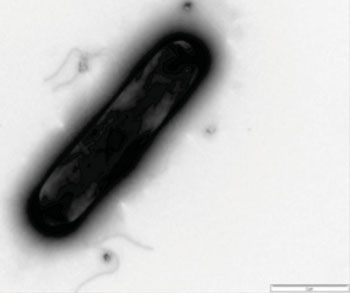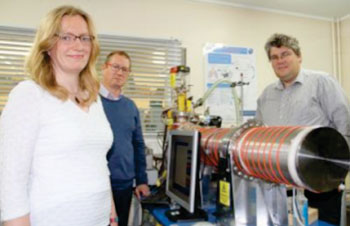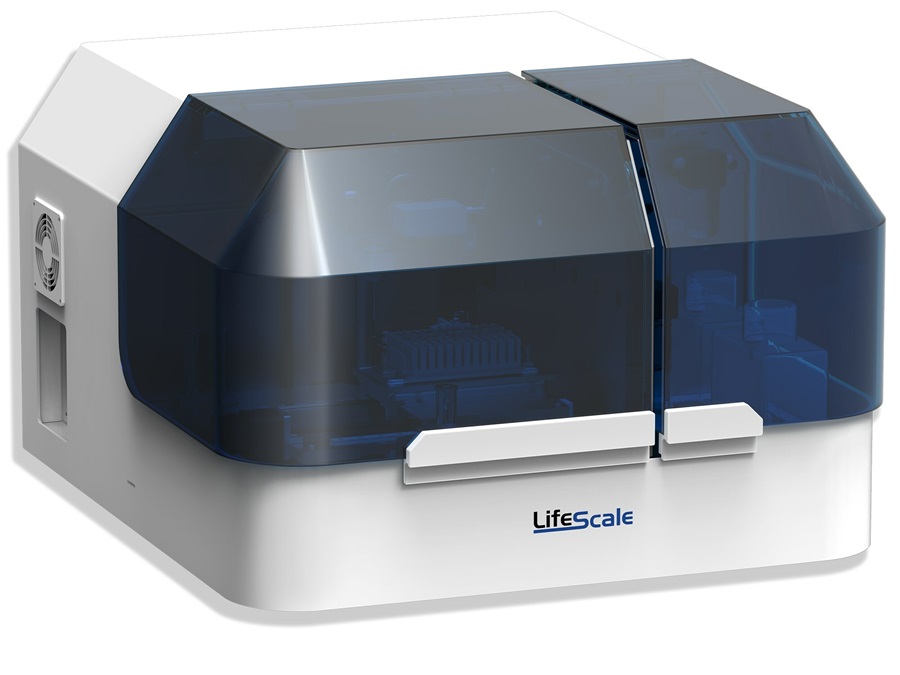Clostridium Strains Emit Volatile Organic Compounds in Characteristic Patterns
By LabMedica International staff writers
Posted on 16 Sep 2014
A novel method for determining Clostridium difficile ribotypes was based on mass spectroscopy analysis of volatile organic compounds (VOCs) produced by cultures of the diarrhea-causing bacteria.Posted on 16 Sep 2014
Bacteria are classified in ribotypes following identification by ribotyping. This process involves the fingerprinting of genomic DNA restriction fragments that contain all or part of the genes coding for 16S and 23S rRNA (ribosomal RNA). Digestion of the genes with a specific restriction enzyme generates fragments of different lengths. Gel electrophoresis analysis of the digested samples converts the fragments to lines on the gel. After blotting onto a matrix and probing, these lines form a unique pattern for each species and can be used to identify the origin of the DNA.
The various C. difficile ribotypes can cause variety symptoms that may need to be treated differently, so a test that could not only spot an infection but also determine which type of infection could lead to new treatment options.
In a recent study investigators at the University of Leicester (United Kingdom) used proton transfer reaction-time of flight-mass spectrometry to profile the VOCs produced by ten different C. difficile ribotypes. A total of 69 VOCs were identified, and combinations of these VOCs were found to be characteristic for each of the ribotypes. The VOC patterns, with the aid of a statistical analysis, were found to be useful in distinguishing different ribotypes.
A tentative assignment of different masses revealed that different ribotypes had markedly different emissions of methanol, p-cresol, dimethylamine, and a range sulfur compounds (ethylene sulfide, dimethylsulfide, and methyl thioacetate), which suggested that VOCs may serve as potential indicators of different metabolic pathways in virulent and less-virulent strains.
Senior author Dr. Paul Monks, professor of chemistry at the University of Leicester, said, "The rapid detection and identification of the bug Clostridium difficile is a primary concern in healthcare facilities. Rapid and accurate diagnoses are important to reduce C. difficile infections, as well as to provide the right treatment to infected patients. Delayed treatment and inappropriate antibiotics not only cause high morbidity and mortality, but also add costs to the healthcare system through lost bed days. Our approach may lead to a rapid clinical diagnostic test based on the VOCs released from fecal samples of patients infected with C. difficile. We do not underestimate the challenges in sampling and attributing C. difficile VOCs from fecal samples."
The study was published in the July 17, 2014, online edition of the journal Metabolomics.
Related Links:
University of Leicester














.jpg)
